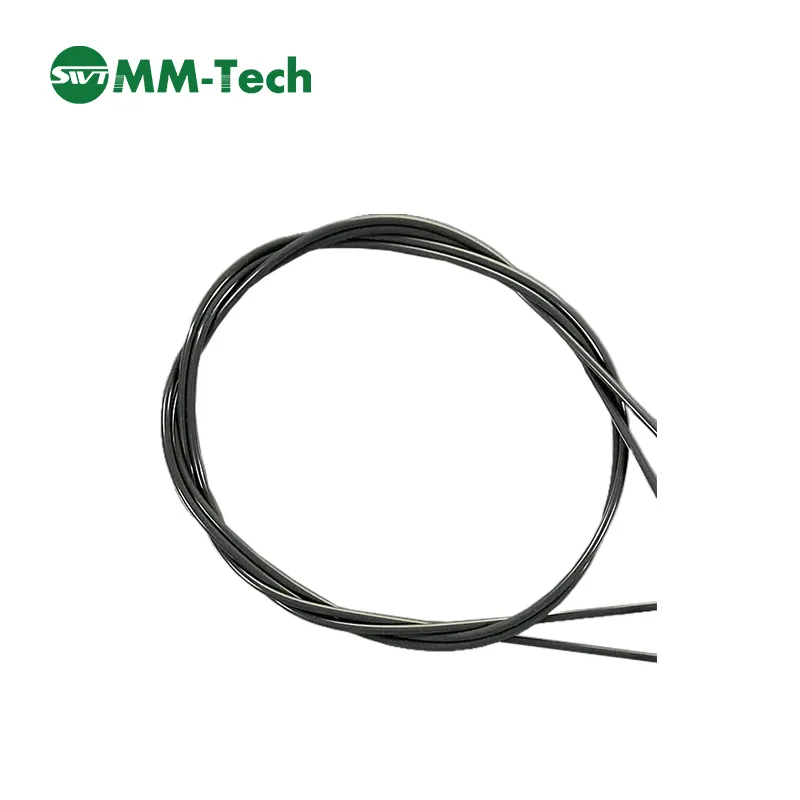
As one of the most versatile plastics in modern manufacturing, polyvinyl chloride (PVC) has revolutionized industries ranging from construction to healthcare. Its unique combination of durability, chemical resistance, and cost-effectiveness has made it a cornerstone of industrial applications. However, the true potential of PVC is unlocked through advanced welding solutions, such as PVC welding rods. This article explores the technical specifications, advantages, and real-world applications of PVC welding rods, while also highlighting the role of Hebei Mingmai Technology Co., Ltd. in driving innovation in this field.
Understanding PVC: A Material Revolution
First synthesized in 1872, PVC has evolved into one of the most widely used plastics globally. Its chemical structure, composed of repeating vinyl chloride monomers, grants it remarkable properties. PVC exists in two primary forms: rigid unplasticized PVC (uPVC) and flexible PVC, which incorporates plasticizers to enhance malleability. These characteristics make PVC ideal for applications such as piping systems, window frames, and medical devices. However, the material’s inherent rigidity in its unaltered state necessitates specialized techniques for seamless joining, where PVC welding rods play a critical role.
Technical Specifications of PVC Welding Rods
The performance of PVC welding rods is defined by their material composition, physical properties, and compatibility with various PVC types. Below is a detailed overview of key specifications:
| Parameter | Specification |
|---|---|
| Material Composition | High-density polyvinyl chloride (PVC) with additives for enhanced thermal stability |
| Diameter Range | 1.6 mm to 6.0 mm (standard sizes for industrial applications) |
| Melting Point | 160°C–180°C (varies based on formulation) |
| Tensile Strength | ≥25 MPa (ensures structural integrity under stress) |
| Chemical Resistance | Resistant to acids, bases, and most solvents (excluding aromatic hydrocarbons) |
| Thermal Conductivity | 0.19 W/m·K (low thermal conductivity for insulation applications) |
Advantages of PVC Welding Rods
Compared to traditional joining methods such as solvent bonding or mechanical fastening, PVC welding rods offer several distinct advantages:
- Structural Integrity: The fusion process creates a bond that is as strong as the original material, minimizing the risk of leaks or failures in critical applications.
- Chemical Resistance: The welded joints maintain the inherent chemical resistance of PVC, making them suitable for use in aggressive environments.
- Cost-Effectiveness: PVC welding rods reduce the need for additional adhesives or hardware, lowering overall project costs.
- Environmental Benefits: The process minimizes waste and eliminates the use of volatile organic compounds (VOCs) commonly associated with solvent-based methods.
- Design Flexibility: Welding allows for complex shapes and seamless joints, enabling innovative designs in industrial and architectural applications.
Key Applications of PVC Welding Rods
The versatility of PVC welding rods makes them indispensable across multiple industries. Some of the most prominent applications include:
1. Construction and Plumbing
One of the most common uses of PVC welding rods is in the installation of plumbing systems and drainage channels. The ability to create watertight seals ensures long-term durability in both residential and commercial settings. According to the National Institute of Standards and Technology (NIST), the adoption of advanced welding techniques has significantly improved the efficiency and reliability of PVC-based infrastructure.
2. Industrial Equipment Manufacturing
In industries such as chemical processing and food production, PVC welding rods are used to fabricate tanks, ducts, and piping systems. Their resistance to corrosion and ease of maintenance make them ideal for environments where hygiene and safety are paramount.
3. Automotive and Transportation
Flexible PVC welding rods are employed in the manufacturing of automotive components, including interior panels and electrical conduits. Their lightweight nature and durability contribute to fuel efficiency and vehicle longevity.
4. Medical Device Fabrication
The biocompatibility of PVC makes it a preferred material for medical devices such as IV tubing and blood bags. Welding rods ensure sterile, leak-proof connections, which are critical in healthcare settings.
Hebei Mingmai Technology Co., Ltd.: A Leader in PVC Innovation
As a pioneer in the development of high-quality welding solutions, Hebei Mingmai Technology Co., Ltd. has established itself as a trusted name in the industry. The company’s commitment to innovation is reflected in its state-of-the-art manufacturing processes and rigorous quality control standards. By leveraging advanced materials science, Hebei Mingmai ensures that its PVC welding rods meet the demanding requirements of modern industrial applications.
According to NIST, the integration of precision engineering in welding technologies has been a key driver of productivity gains in manufacturing. Hebei Mingmai’s products exemplify this trend, offering solutions that align with the latest industry standards and best practices.
The Future of PVC Welding Technology
As industries continue to prioritize sustainability and efficiency, the role of PVC welding rods is expected to expand. Innovations such as automated welding systems and eco-friendly material formulations are poised to further enhance the performance and applicability of these products. For instance, the development of NIST-endorsed standards for material testing is expected to set new benchmarks for quality and reliability in the field.
Conclusion
PVC welding rods represent a critical advancement in material science, enabling seamless and durable connections in a wide range of applications. Their technical superiority, combined with the expertise of manufacturers like Hebei Mingmai Technology Co., Ltd., ensures that industries can achieve optimal performance and cost-efficiency. As the demand for sustainable and high-performance materials grows, the future of PVC welding technology looks increasingly promising.
References
National Institute of Standards and Technology (NIST). (n.d.). Driving Innovation. Retrieved from https://www.nist.gov.
MM-Tech, established in 2011, is a leading manufacturer of thermoplastic welding equipment in China.hot air plastic welder We specialize in the research, development, production, and sales of thermoplastic welding equipment.hot air welding gun Our product line is extremely rich, covering geomembrane welders, polymer hot air welders, tarpaulin hot air welders, hot air welders, hand extrusion welders, and various welding tools, comprehensively meeting the diverse needs of both on-site construction and workshop operations.hot air welder roofing Our products have been exported to over 100 countries and have won the trust of more than 3,000 customers.plastic welding heat gun|super blog